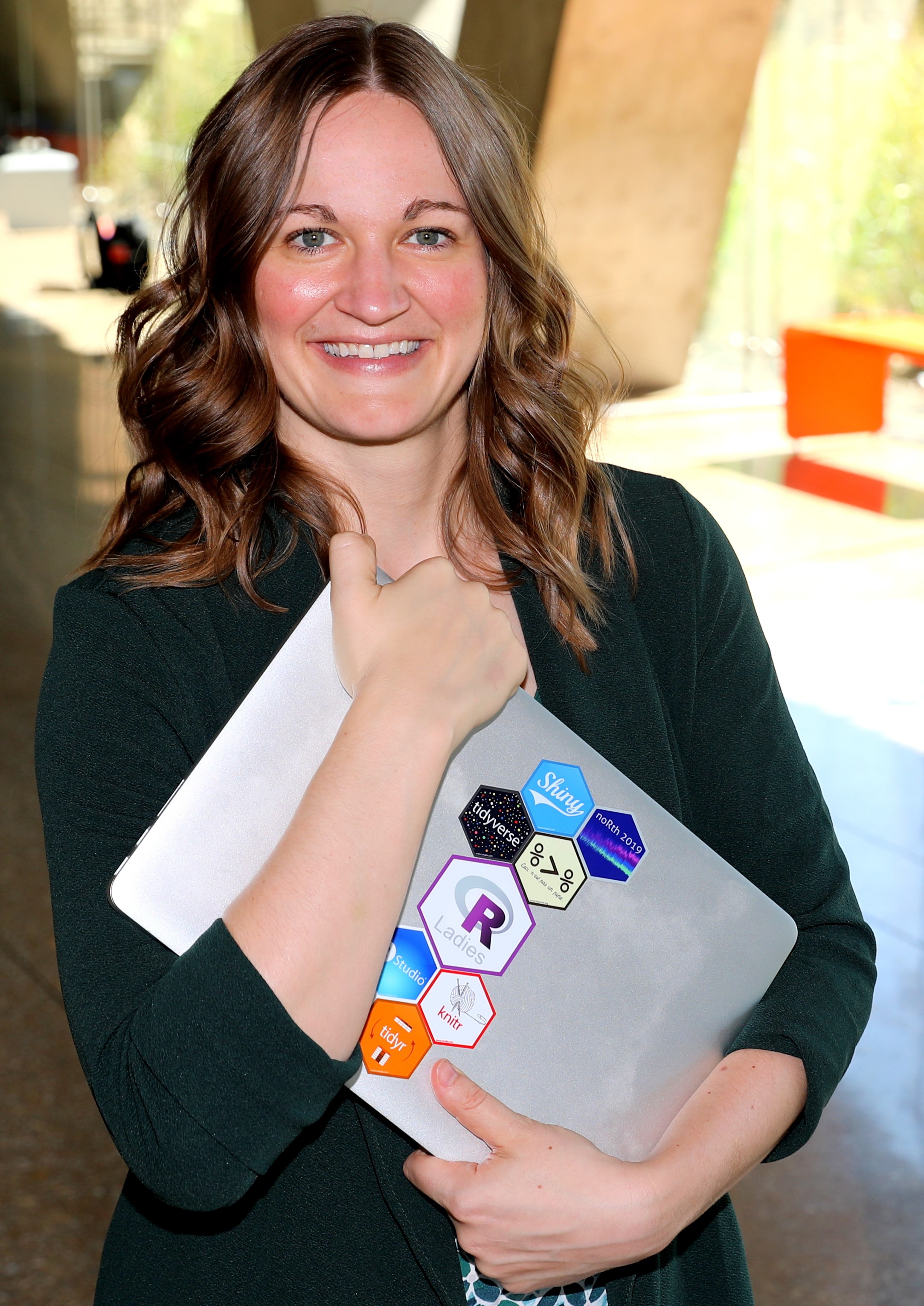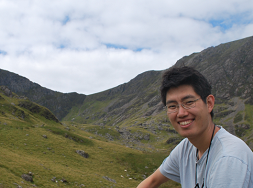Welcome to the 2023 Rose-Hulman Undergraduate Mathematics Conference. This is our 38th conference, and we look forward to hosting you on the beautiful Rose-Hulman campus.
The vision for the Rose-Hulman Undergraduate Mathematics Conference is to provide a venue to highlight and celebrate the accomplishments and work of undergraduate mathematicians and statisticians. The conference is put on largely by undergraduates for undergraduates. The contributed student talks will cover an array of topics including pure mathematical theory, applied modeling, statistics, and data science.
Invited Speakers
Lindsey Dietz

Taking a Leap of Faith: Association to Causation
"Correlation does not imply causation." We've all heard it, but how can we actually use statistics to answer questions of causality such as "Will a new feature increase revenue in my app?" or "Does this vaccine prevent the flu?". This talk will introduce the field of Causal Inference along with key assumptions required to make causal claims. We will dive into one common technique in the field known as "matching" using real data and the R programming language. All materials from this presentation can be found here
Dr. Lindsey Dietz is a Data Science Manager for the Federal Reserve Bank of Minneapolis where she provides quantitative leadership in Federal Reserve System large bank stress testing efforts. In 2022, she was honored as one of the Minneapolis-St. Paul Business Journal 40 Under 40. Lindsey is a co-leader of the R Ladies - Twin Cities chapter and has been the organizer of the noRth R user conference for three years. She is an alumni of the AAAS IF/THEN Ambassador program where she served as a high-profile role model for the next generation of girls in STEM and appeared with her 3D printed statue at the Smithsonian. Lindsey earned a B.S. and M.S. in mathematics from the University of Minnesota - Duluth, where she is also in the athletic hall of fame for her accomplishments in basketball. She received her PhD in statistics from the University of Minnesota - Twin Cities and was recently named a recipient of a School of Statistics Alumni Award.
Francis Chung

How to See Inside Your Hand
Let's say you want to see the inside of your hand: the muscles, the tendons, etc. The problem isn't that your hand doesn't transmit light. If you go into a dark room and cover a flashlight with your hand, you'll see the light coming through. The problem is that the light inside your hand is scattered: it bounces around a lot inside the hand, so the light that comes out doesn't carry information about any one place in particular. That's why if you try the flashlight thing, you'll only see some blurry redness.
To do better -- to undo the effects of scattering -- you need a mathematical model of how light behaves in a scattering medium. You need to study the solutions to the resulting equations and try to understand what they have to say about the optical parameters of the medium they pass through. And once you've understood scattering on that level, it turns out there are many interesting questions you can ask next -- not just how you can see inside your hand, but how you can see around corners, how you can hear the sound of light, and many more.
In this talk I'll try to describe some of these ideas in broad terms, starting with the basics, and building all the way up to the questions I mentioned above. I'll bring a flashlight.
Dr. Francis Chung is an associate professor of mathematics at the University of Kentucky. He grew up in Canada and earned his B.Sc. from the University of Toronto before moving to the United States for graduate school. He earned his Ph.D. from the University of Chicago in 2012 and worked as a postdoctoral scholar at the University of Jyväskylä in Finland and the University of Michigan at Ann Arbor before arriving at Kentucky in 2015. He has published a paper in a respectable mathematical journal which contains the phrase "no pun intended" four times.
Short Courses
In addition to the student talks and plenary sessions, we are offering a series of two hour short courses in conjunction with the conference. The short courses are presented by experts in the respective field, and are intended to be an introduction for undergraduates to the given area of mathematics. The short courses will happen on Friday afternoon of the conference. The courses are open to all registrants; there is no need to pre-register. You may decide which course, if any, to attend when you arrive.
Applications of Data Science in Practice
Dr. Mark Daniel Ward, Purdue University
This workshop will be a hands-on introduction to some examples of data wrangling. It should be accessible for everybody. We will show examples about how to work with large data sets using Python, R, or SQL, in a JupyterLab environment. This workshop requires participants to bring their laptop but does not require any software to be installed. Instead, we will also demonstrate the high performance computing environment that our students use, for introductory courses on data wrangling. Students and professors are both welcome to attend! We expect that we will get participants excited about ways to work with large data sets. No computational background is needed for this workshop.
Please complete the instructions by Thursday to set up your account and ensure you are able to participate during the workshop! Instructions can be found here.
Upping your LaTeX Game: Class files, scripting, and graphics
Dr. Tim All, Rose-Hulman Institute of Technology
LaTeX is the de facto standard when it comes to typesetting mathematics and scientific documents. In this workshop, we aim to give an overview of some of the more advanced features available in LaTeX. Specifically, we will explore the following:
- the creation of custom packages and document classes to avoid those mile-long preambles,
- other TeX engines with specific emphasis on LuaLatex which includes Lua as an embedded scripting language. This allows for a host of useful applications (e.g., creating custom assignment classes that auto-populate a table of scores or an answer key, or that randomly generate similar problems upon compiling),
- the various tools and add-ons available for creating high-quality 2D and 3D vector graphics in LaTeX.
Non-pathological non-events
Dr. John McSweeney, Rose-Hulman Institute of Technology
In probability theory, events represent sets of outcomes whose probability can be sensibly defined. In a typical undegraduate probability course, generally any set of outcomes is allowed to be considered an event -- if you're lucky, with a footnote about how technically one could construct a non-event set (i.e. a non-measurable set) with much more advanced tools. However, when describing random processes evolving in time, there is an easy and natural way to restrict what sets of outcomes can and can't be events, which is used to encode information about the amount of "information" that is available to an "observer" of the process. This interpretation is fundamental for understanding models in mathematical finance.